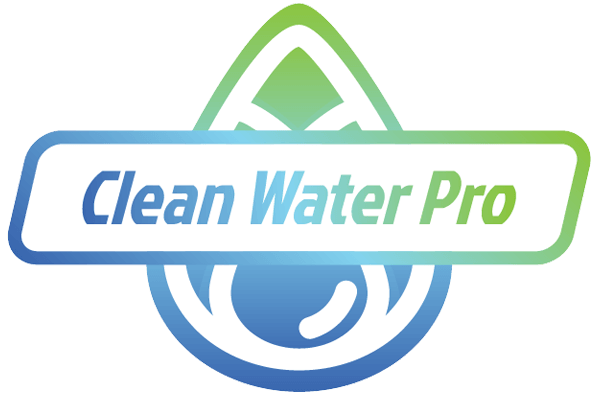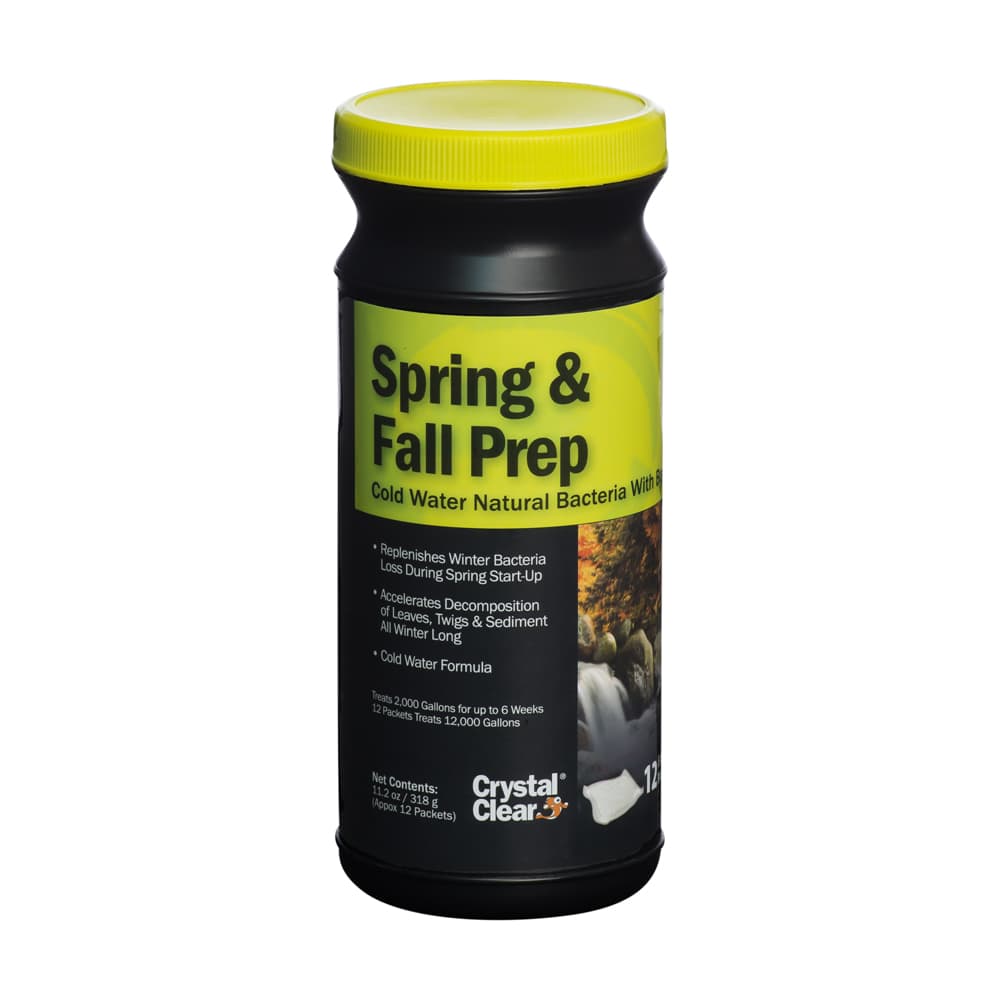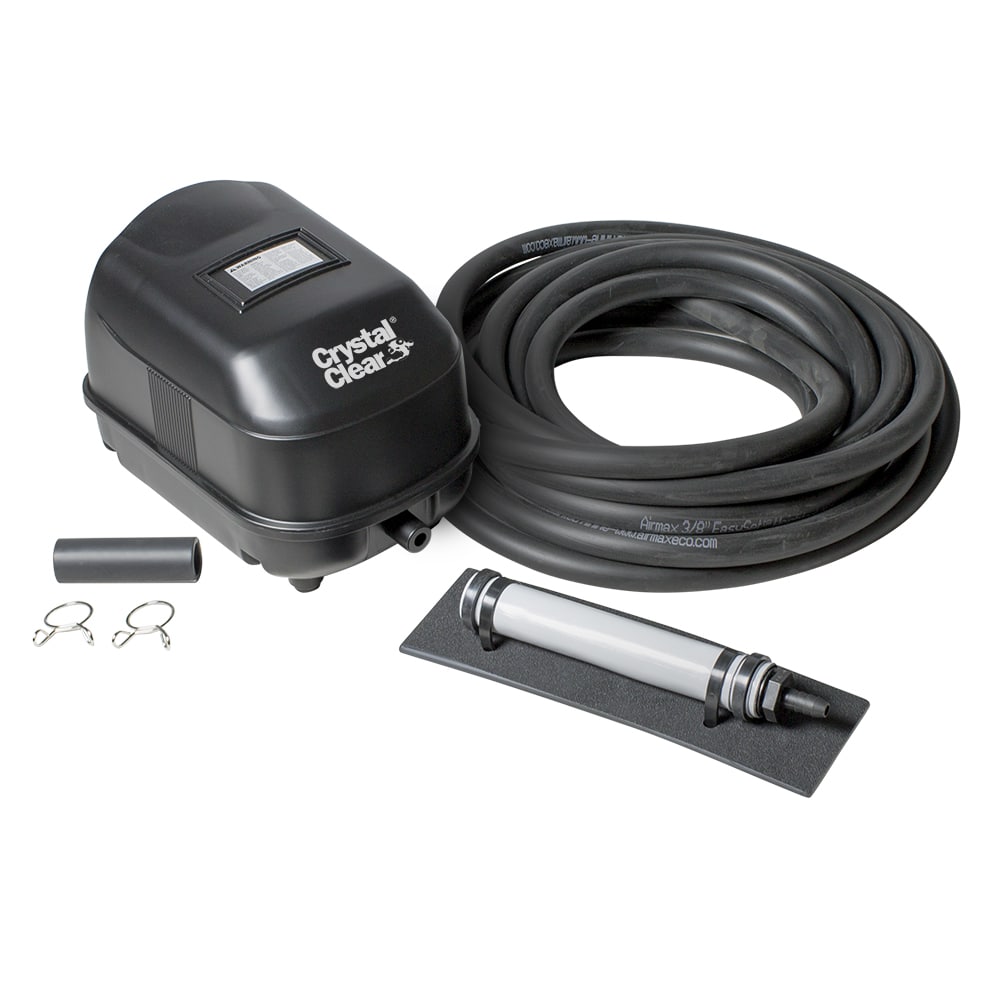Do You Have a Pond Stocked with Fish and Live in a Region with Freezing Temperatures?
You can choose two options when planning to overwinter your fish.
-
-
-
- Keep your koi and goldfish in your pond throughout the winter
- Bring your koi and goldfish indoors for the winter
-
-
Both of these options will keep your fish happy and healthy, so the choice is yours!
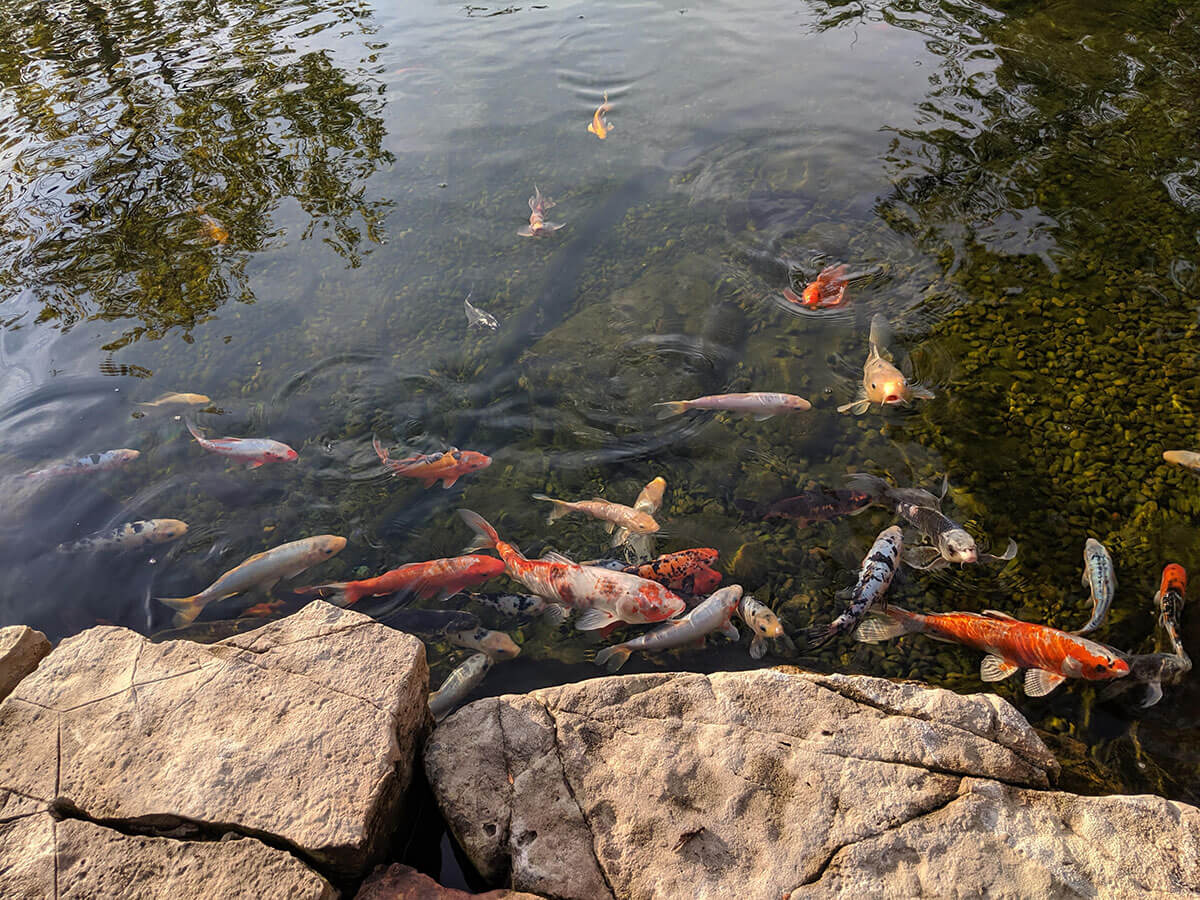
Let’s say you’ve decided that you want to keep your goldfish and koi swimming around in your pond through the winter. Great! That’s the preferred option as it saves you from transporting them from your pond and into your house or garage.
Certain events can’t occur if you plan to keep your goldfish and koi fish in your pond through the winter.
One thing that can’t happen is to have the water within the pond freeze to the bottom. If your pond freezes all the way through, your fish won’t be able to survive, unfortunately.
The second thing you want to prevent is having all the gasses trapped under the ice. This happens if your pond’s surface freezes over. So how can you prevent this from happening?
Your pond needs an opening, like a hole, in the ice surface. This hole is essential to have safe and healthy fish throughout the winter. Because there’s an opening in the ice, the gasses in the water can escape. If those gases become trapped and too concentrated, your fish are at risk of mortality.
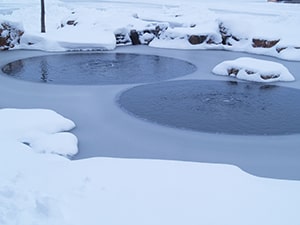
It’s not just the gases that are important to release. Your fish also need adequate dissolved oxygen to survive. The hole in your pond’s ice will also allow dissolved oxygen to transfer into the water. In case you’re curious, our team at Clean Water Pro discusses the importance of dissolved oxygen here.
Prepare Your Pond to Keep Koi and Goldfish Safe and Healthy for Winter
It’s best to use the heater in combination with a koi air aeration system as it will increase the dissolved oxygen for the fish, and the heater will keep the water open. Here’s our top list of priorities to help you overwinter:
- Fill the pond to the max before freeze-up. Use Vanish Plus to remove the chlorine and improve the fish’s slime coat.
- Treat the pond with Spring & Fall Prep Beneficial Bacteria for cold water.
- Treat the water with Wipeout to knock out parasites on the fish.
- Aeration is key – dissolved oxygen is critical for fish. We highly recommend using fine bubble aeration such as:
- Pond De-icer – position the aeration under a 1500-watt de-icer for the water. The aeration will help circulate the heated water.
- Only feed your fish wheat germ food in the fall before dormancy. Stop feeding your fish in the fall as they will go into a dormant state. You don’t need to feed your fish over the winter months. They will eat invertebrates and other organics from the pond if they become hungry.
Maybe you’re not ready to prepare your pond to overwinter your fish. If this is your scenario, here’s what you need to do!
Steps to Take When Moving Koi Fish and Goldfish Indoors For the Winter
You’ll need to transfer your koi fish and goldfish into a tank within a garage or indoor space. This area should be just above freezing temperatures so that your fish are in a dormant state. It is important to set up your tank with aeration to ensure enough dissolved oxygen for the Koi and goldfish to breathe.
Furthermore, you will want to install a robust filtration system that clarifies the water to help keep the ammonia levels down. We recommend that you apply beneficial bacteria such as spring and fall prep to keep the nutrient level in check.
Partway through the season, it’s good to do a water change where one-third of the water is removed and replaced with fresh water. Again, if the fish are in a cooler area, they do not need to be fed as they will be dormant, and their metabolism is very low
- Fill a tank to keep the fish overwinter. This area should be just above freezing to keep the fish dormant. Use Vanish Plus to remove the chlorine and to improve the slime coat on the fish.
- Treat the tank with Spring & Fall Prep Beneficial Bacteria for cold water.
- Treat the water with Wipeout to knock out parasites on the fish
- Aeration is key – dissolved oxygen is critical for fish. These pond aerators can be moved in from the pond. We highly recommend using fine bubble aeration such as
- Only feed your fish wheat germ food in the fall before dormancy. Stop feeding your fish in the fall as they will go into a dormant state. You don’t need to feed your fish over the winter months.
The Bottom Line
Now you know what your options are depending on your situation. You can keep your goldfish and koi in your pond over the winter, even in freezing temperatures. You just have to ensure that the necessary steps are taken.
Simply put, the most important aspect is having high enough dissolved oxygen levels within the pond. Make sure to have an aeration system operating and, if needed, a de-icer to create openings for dissolved oxygen to enter the water. Our water experts can help you should you have any questions or concerns about how to overwinter your fish.
